After the disappointment of the Andrew Garfield-led Amazing Spider-Man movies, everyone's favorite wallcrawler has been having a renaissance. Entering the Marvel cinematic universe in 2016's Captain America: Civil War, the webslinger fully redeemed himself with well-crafted live-action film in Spider-Man: Homecoming. That film was quickly followed up by a heart-wrenching appearance in Avengers: Infinity War, an Oscar-nominated animated feature, Spider-Man: Into the Spiderverse, a record-selling Playstation 4 video game, and a wildly successful spin-off film Venom, not to mention his expected appearance in what may be the biggest comic book movie ever made, Avengers: Endgame. On top of all that, the first trailer for his next solo-outing, Spider-Man: Far From Home, dropped last week to the delight of Jake Gyllenhaal stans everywhere. In the midst of all his success, Spider-Man has quietly become one of the most inclusive and socially conscious superheroes of today.
Last week, it was announced that Spider-Man: Far From Home would feature two out transgender actors playing trans characters, the first big-budget superhero film to do so. Spider-Man: Homecoming also featured a queer character, as well as numerous people of color. Spider-Man: Into The Spiderverse brought fan favorite Miles Morales, who is of Hispanic and African-American decent, to the big screen for the first time as the film's lead. Spiderverse also gave us two super-powered female members of the spider-family, Spider-Gwen and Peni Parker. Even further, Peni is also Japanese, adding to the growing representation of positive Asian portrayals in Hollywood films in a year in-part defined by Crazy Rich Asians' success. It's also worth mentioning that Spiderverse included a Jewish version of Peter Parker, who is typically portrayed as either secular or Christian.
The Spider-Man video game also featured a wonderful easter egg for queer fans by having a giant rainbow flag, as well as several smaller ones, scattered around the game's fictionalized New York City map. This lead to numerous LGBT players snapping in-game selfies of Spider-Man celebrating his gay pride. Even the Venom film got in on the fun, with fans shipping Tom Hardy's Eddie Brock and the titular male alien-symbiote after the two kissed in the film. Sony even encouraged the pairing, releasing a romantic comedy-esque trailer for the film to promote the home release. While some complained of queer-baiting, most felt that it was all in good fun and included queer people in on the joke, instead of making us the target.
Indeed, even in the comics, Spider-Man has always been a fairly inclusive hero. Miles Morales was introduced in the early-2000s, taking over the mantel from Peter Parker for several years. Spider-Gwen quickly became one of the highest-selling female superhero comics. Spider-Woman was a prominently featured bisexual character, and the female Asian-American hero Silk also had LGBT supporting characters, Rafferty and Lola, who were in a healthy relationship. Additionally, many view vampire villain Morbius, who is getting a spin-off film starring Jared Leto next year, as a metaphor for those suffering during the HIV crisis of the '80s. Unlike his Marvel counterparts Thor, Iron Man and Captain America, Spider-Man's world has accurately reflected real world diversity for years.
Yet, the Spider-Man brand hasn't just focused on simply including a diverse group of people; it's actually centered themes of inclusion and self-love, as well as respect for the power of diversity. This was perhaps most notable in Spiderverse. In the film, a teenaged Miles Morales struggles with believing he has what it takes to be the new Spider-Man. This lack of confidence is compounded even further when he's confronted by six experienced Spider-People from across the multiverse, including an alternate version of Peter Parker, as well as the aforementioned Peni Parker and Spider-Gwen. Yet, Miles slowly learns that all that is required to be a hero is a "leap of faith" by believing in yourself. The film ends by telling us that anyone has the capability to wear the mask, a theme reflected and strengthened by the film's subtle diversity.
While it's a seemingly simple idea that any of us can be a superhero, it's sadly still a radical concept in a endlessly growing film genre that has predominetly centers straight cisgender white men. Even though movies like Black Panther, Wonder Woman, Aquaman, and the upcoming Captain Marvel are beginning to open superhero-dom to other identities, the genre still has a long way to go. Yet despite still centering a straight white cisgender protagonist, Spider-Man is poised to lead the charge in changing the face of the entire superhero world.
That is because relatability and inclusion has always been core to Spider-Man's appeal and message. It's why the late Stan Lee decided that, unlike other superheroes who expose parts of their faces, Spider-Man had to wear a full-face mask. By doing so, anyone could feel that they could be in the costume. Even further, Spider-Man isn't the king of a country, a billionaire, a woman out of a Greek myth, or a brilliant scientist. He's just an average high-school kid from Brooklyn who always strives to do the right thing even while struggling to balance his everyday life and hiding a secret identity. His everyday struggles are things that most of us deal with everyday.
And it's the idea of balancing a secret identity with everyday life that has always allowed Spider-Man to connect with queer audiences long before comic writers were allowed to explicitly include LGBT characters. Many in the queer community discover that we are "different" when we hit puberty. As our bodies change, we start to learn that we have to hide parts of ourselves in order to keep ourselves safe. While certainly hiding a secret identity isn't exclusive to Spider-Man, the fact that he does so while still trying to attend classes, holding down a demanding job that barely pays the bills, and maintaining a romantic relationship, resonates with so many in the LGBT community. Queer people constantly hide that they are queer while also trying to live a "normal" life. Yet, while this constant struggle with identity defines our lives usually for the worse, Spider-Man made us feel that our struggle was not only more common than we thought, but a source of strength.
Indeed, perhaps the strongest part of Spider-Man's inclusivity is the subtlety to which it has been done. While Black Panther, Black Lightning, and Wonder Woman rightly put issues of identity front and center, Spider-Man's quiet diversity allows audiences who typically cry "SJWs are ruining my favorite characters" to actually see diversity showcased without it being overt. It also allows those of us who are being represented to feel like our sadly politicized identities don't always have to define the conversation. Talking about racism, misogyny, and transphobia are issues that the superhero genre should and has tackled, but it's also necessary to show that anyone can take part in the simple joy of being a superhero.
So it makes sense that Spider-Man is helping to lead the way for inclusion in his films. He is perhaps only rivaled by the Arrowverse, DC Comics' groundbreakingly diverse and queer-inclusive interconnected superhero shows on the CW, which recently introduced the world to the first live-action transgender superhero. Yet Spider-Man's larger mass-market appeal, younger audience, and more relatable circumstances enable him to have larger impact on superhero stories, and the world around us.
It may be cliche at this point to say that representation matters, but it does. The ecstatic reaction from women and the African-American community to Wonder Woman and Black Panther showed that centering diverse characters has real world impacts on those they represent. And that representation is still something that the LGBT community still struggles to find on the big-screen. We still have yet to see a queer superhero be a featured character in a film. While we are slowly getting tangential representation in the genre via Spider-Man, as well as films like Deadpool 2, there is still a long road ahead.
Yet, in the end, Spider-Man has come to represent the next step in superhero representation. Spider-Man continues to be the world's most popular superhero simply because he feels like a part of our community. He stands for all of us, just as we stand up for each other. So it's nice to see our friendly neighborhood Spider-Man fighting to accurately represent the neighborhood he calls home.
JESSIE EARL is a transgender writer and video creator. She currently works as a video producer for Microsoft as well as her own YouTube channel, which you can follow here.




























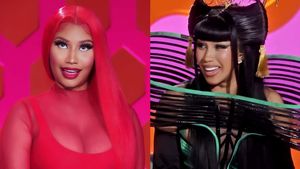


















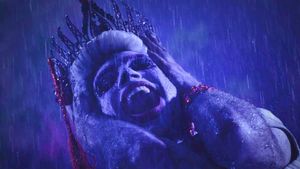




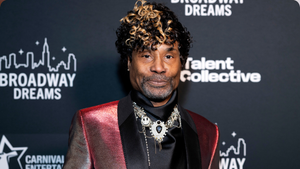



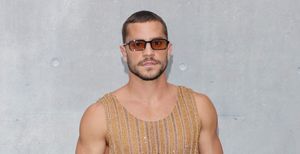







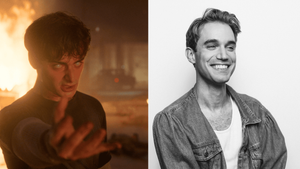
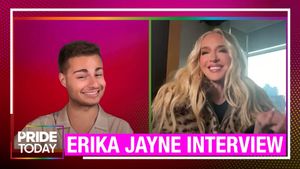


Charlie Kirk DID say stoning gay people was the 'perfect law' — and these other heinous quotes